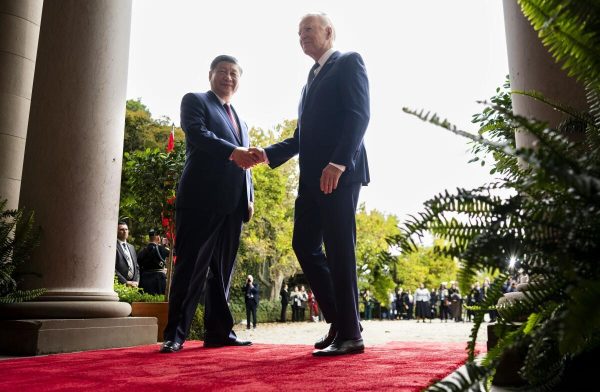The San Diego Zoo awaits its two new members, as China has agreed to start sending pandas to the US again. A pair of giant pandas, one female and one male, are expected to arrive to the zoo at the end of summer.
Symbolic of the US-China diplomatic relationship, pandas being sent to the US again shows efforts to ease the distrust between the countries. Since 2019, the relationship between two countries has been tense, resulting in China refusing more panda loan agreements. The Chinese online community approved of this decision, claiming the US zoos were mistreating their “national treasure.” The number of pandas in the US dwindled down, bringing an end to “panda diplomacy.”
This panda diplomacy began in 1972, when the first pandas were gifted from Beijing to the National Zoo in Washinton, D.C., establishing the pandas as a symbol of the US-China friendship. The San Diego zoo’s history with pandas began when the first two, Basi and Yuan Yuan, arrived in 1987. It was a six-month trip, but in that short time, they received attention from 3.8 million visitors. Acknowledging the excitement of the zoo visitors, China sent two more pandas to the zoo in 1996: Bai Yun and Shi Shi. The first US-born panda cub, Hua Mei, was born in the San Diego Zoo to Bai Yun and Shi Shi in 1999. But in 2019, any and all of the zoo’s pandas departed due the end of the contract with China.
It’s been five years since pandas resided in the San Diego Zoo, but their return was hinted last November. The announcement was made by the president of China, Xi Jinping, when he met with President Joe Biden in San Fransisco.

“I was told that many American people, especially children, were really reluctant to say goodbye to the pandas, and went to the zoo to see them off. I also learned that the San Diego Zoo and the Californians very much look forward to welcoming pandas back,” said Xi during his visit (Gao 2024). Pledging to reduce tension between the countries, he signaled that China was ready to continue its cooperation with the US on panda conservation.
With concern for the species’ survival, Xi wishes to do the best to protect and recover the status of the giant pandas. With the pandas currently labeled as endangered, the collaboration between the two countries can increase scientific research for the survival of this species.
With less than 2,000 in the wild, the giant pandas are at risk of extinction. Threatened by habitat fragmentation, population isolation, and low reproducibility, the bears’ population struggles to increase without humans’ conversation efforts. The vice president of the San Diego Zoo Wildlife Alliance (SDZWA), Dr. Megan Owen, shared her thoughts on panda conservation:
“Pandas in our care and in the care of Chinese colleagues at conservation facilities play an important role as assurance against extinction and loss of genetic diversity in their native habitats, as well as a source population for reintroductions. San Diego Zoo Wildlife Alliance is uniquely positioned to collaborate toward a shared goal of creating a sustainable future for giant pandas” (Anderson 2024).
The zoo and zoo visitors eagerly await the arrival of the pandas, which could be as early this summer. One of the two pandas could be a descendant of Bai Yun and Gao Gao, two of the zoo’s former pandas. Reinitiating “panda diplomacy,” the black-and-white bears living in the US could reflect a positive and healthy relationship between the two countries.




